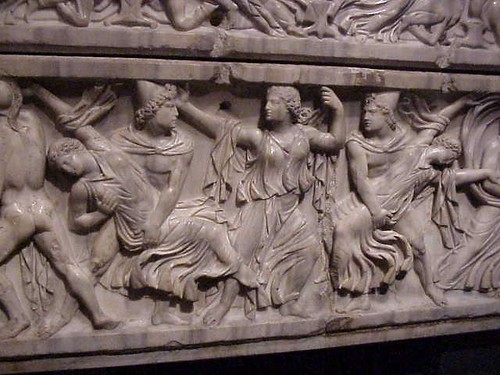submitted as a Masters thesis at the University of North Carolina, Chapel Hill
Until recently, death in the Roman world was only known through literary sources
such as poems and histories. Even Jocelyn Toynbee?s (1971) compendium Death and Burial in the Roman World draws much evidence from funerary art and the epigrams
 on funeral markers, two realms beleaguered by the same problems as textual evidence:
on funeral markers, two realms beleaguered by the same problems as textual evidence:the identity of the author and the idealization of the deceased. Although Latin literary
scholars have begun to deal with issues such as authorial intent and intended audience by
appealing to literary theory, for the most part, there has been little in the way of an analogous
movement in Roman archaeology to deconstruct textual truisms using the wealth
of biocultural material from excavated sites. In particular, human skeletal remains, which
can elucidate various past behaviors through careful scientific analysis, have largely been
ignored as a credible source of information about the ancient Roman world of both the
living and the dead.
Osteology, or the study of bones, has been a part of Roman archaeology since at
least the nineteenth century. Cursory analysis of skeletons with the objective of culling
demographic histories, however, was always subsumed by publication of grave goods in
large site reports, sending biological material to languish in appendices. With sex of
a skeleton determined based on associated artifacts as often as estimated by biological
markers, osteological analysis in much of the Old World stagnated, especially when compared
with the advances made in physical anthropology in the United States in the late
19th and 20th centuries thanks in part to the creation of four-field anthropology programs
at universities around the country.
Yet human remains, not prone to the same biases in interpretation as literary evidence,
can help answer questions about diet, disease, war, gender, social status, occupation,
culture contact, and social organization. Through the practice of bioarchaeology, or
the investigation of human skeletal materials from archaeological sites, skilled anthropologists can directly engage with biocultural data to answer pressing questions about past
societies. Roman archaeology in particular can benefit greatly from a bioarchaeological
approach because of the potential to integrate textual, artistic, and other material evidence
with biological remains to create a more holistic picture of all levels of life and
culture in the Roman world.
No comments:
Post a Comment